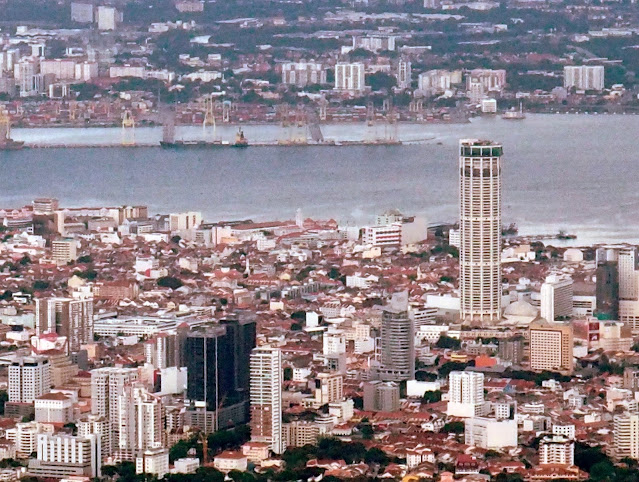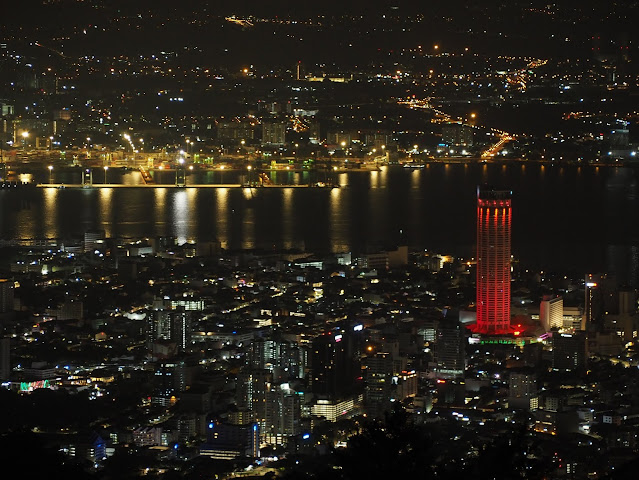Over the past week or so, I have been rocked by reports from my friends of people they know who have succumbed to the dreaded coronavirus. I've lost count of the number but it must be five or six within the week. Of these victims of covid-19, one was known to me as he had not only been an Old Free, four years my junior in school, but he had also been an ex-colleague of mine in two organisations: National Echo (earlier known as Straits Echo Press) and Ban Hin Lee Bank.
I worked at the National Echo for only six months from December 1976 till May 1977, and this friend had joined maybe in April or May of 1977. After I left to join the bank, I was pleasantly surprised to see him join the same bank in 1979. I can't remember the month he joined though. Later, I learnt that he did leave the National Echo to join The Star newspaper. My unnamed friend was afflicted by the coronavirus around Chinese New Year but whilst in the hospital, he suffered two heart attacks. He had clung on until the 13th of May.
I won't be saying anything else about the other cases because the victims were not known to me personally. But I shall say that I am still sad about their passing; knowing so many people have died in the past 10 days means that the danger from this invisible enemy is not decreasing. It's the opposite! In Penang alone, the accumulated death toll from the coronavirus had risen from 28 at the end of April to 50 on the 20th of May. That's an increase of 22 deaths in 20 days alone in Penang. (eight deaths recorded for 17 May and seven deaths on 20 May.)
A few days ago, I heard this now famous rant on Whatsapp which complained of the government giving short shrift to the aged care homes of senior citizens around the country. Although they had registered to be vaccinated under the government's nationwide covid-19 vaccination programme, the homes had been practically ignored. This public complaint was a catalyst before the government was jolted into promising that the senior citizens in these homes would be vaccinated soon.
The other catalyst was the devastating news of an old folks home in Katz Street getting affected by the virus. A 68-year-old man who worked at the home was identified as the index case. Subsequently, 36 inmates of the home were confirmed affected. Not only was this home closed, two other related homes where this index case also worked were closed off.
Then came news of several infections that caused temporary closures for cleansing and sanitisation: the Bagan Ajam market in Butterworth, the Jelutong market in George Town, the Batu Lanchang food court and the Super Tanker hawker food centre on the island. Several weeks or months earlier the Pulau Tikus market had been temporarily closed too. I believe all these would not have happened if the traders, hawkers and customers had taken more precautions with the SOPs. By that, would include keeping a safe social distance from one another of at least a metre apart but that would be practically impossible in a market, wearing suitable face masks and washing hands regularly.
To add to these, I would also say bathing and changing clothes after visiting the markets, which suggests that one shouldn't visit the markets every day if one can help it. Stock up the perishables in your refrigerator for at least a week if possible. Personally, my wife and I are taking 1000mg of Vitamin C everyday while a pharmacist friend has also recommended zinc and Vitamin D3 supplements too.
I've also resorted to wearing double surgical face masks when I visit the market, and encouraging others to follow suit. It is still comfortable enough to wear two face masks. Breathing is still easy also although I wouldn't recommend exercising in them. But for everyday mundane use outside the house and visiting crowded places, I recommend this. Some people like to use cloth masks but I think they are not as effective as the surgical face masks.
Unfortunately, there are still people flouting this face mask SOP. Yesterday at the Kampong Baru market in Bukit Mertajam, although regulations have been tightened on allowing the number of people to enter the market, I found several traders openly miswearing their masks below their noses for whatever reasons. They might as well not wear one at all if they do not want to cover their noses. A covid-19 accident is waiting to happen at this market place.























